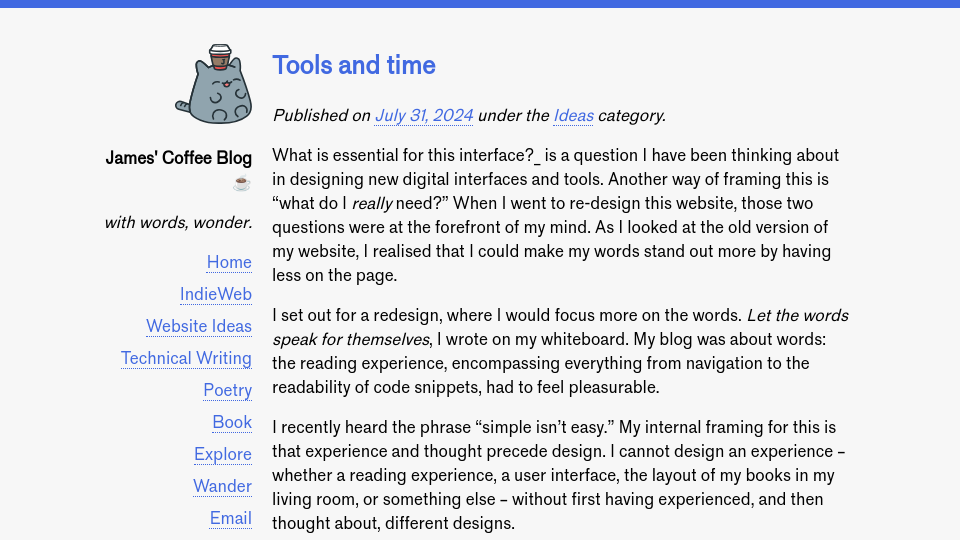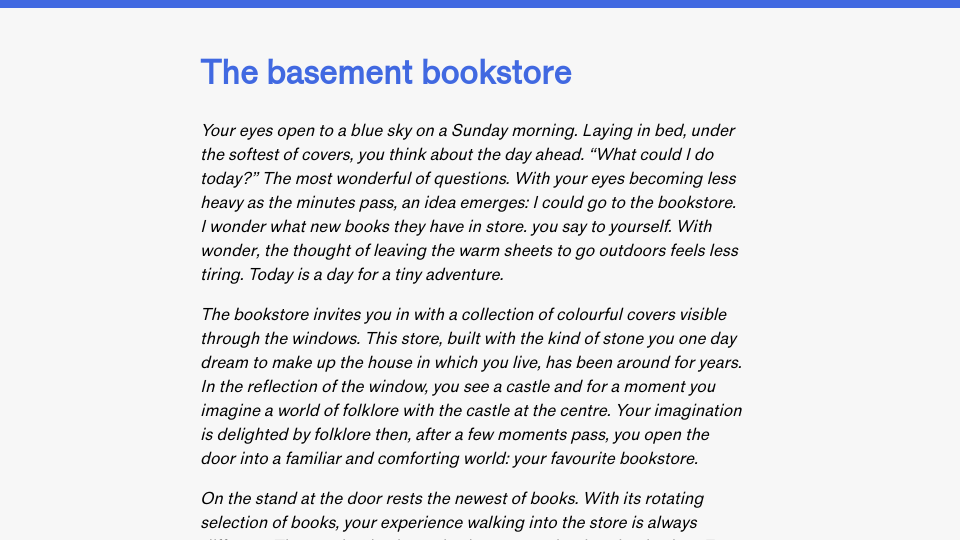What is essential for this interface? is a question I have been thinking about in designing new digital interfaces and tools. Another way of framing this is “what do I really need?” When I went to re-design this website, those two questions were at the forefront of my mind. As I looked at the old version of my website, I realised that I could make my words stand out more by having less on the page.
I set out for a redesign, where I would focus more on the words. Let the words speak for themselves, I wrote on my whiteboard. My blog was about words: the reading experience, encompassing everything from navigation to the readability of code snippets, had to feel pleasurable.
I recently heard the phrase “simple isn’t easy.” My internal framing for this is that experience and thought precede design. I cannot design an experience – whether a reading experience, a user interface, the layout of my books in my living room, or something else – without first having experienced, and then thought about, different designs.
In order to answer the question What is essential? in designing my website, I think I needed to explore. I needed to try out different things; with each new page type – coffee shop maps, a colophon – I was learning something new. Then, after studying my site from the perspective of a user rather than the site maintainer, I thought that maybe I could try a new experience. Perhaps there could be less on the page. Perhaps I could move my words up so more are above the fold, like is the case on other websites I like.
My belief that experience and thought precede design has allowed me to let go of the pressure to make some tools perfect, and to know that my first try may not be my best try. I cannot go into designing a tool knowing that it will not be my best. Rather, I know that I can use what I learn to make something better.
This realisation came from hindsight. When I was designing the engine behind this site two years ago – the part that makes the pages, not the design of the pages that you see – I was working with the knowledge I had. Two years later, I had more knowledge and realised that there were some parts of the experience that do not feel functional or delightful. I could do better, so I tried again. My new tool better serves my needs.
There are some itches that I have for tools that should exist. I would like to have a feed reader that does not make me feel like I need to check it. I would like better tools for writing documentation. In some cases, I am ready to start experiment: I actively have projects in the works. In other cases, I am onto a second draft, after learning something new – from my studies, or from others – that could improve the project.
In other cases where I want a tool to exist, I know that it should exist but I am not ready to make it. I may have experienced enough to know that I am disillusioned or discontented with a tool, but not enough to know what it is that needs to be improved. In such scenarios, I need to think. I need to see how others have approached similar problems. I need to learn more about the problem.
I now know that may take me months or years to know what I need to make an optimal solution to the problem. There is a significant amount of work that needs to be done to take a problem description into a solution. And even more to reach the bar that encompasses the best tools I use: delight.
When I see friction, I know there are things I can do. I can study, experience, think, and try to make something new. In creation, learning. From learning, new perspectives. Learning and new perspectives are the ingredients for designing a tool that is functional, focuses on the essential, and is delightful to use.
Designing tools takes time. Making delightful tools doubly so.


